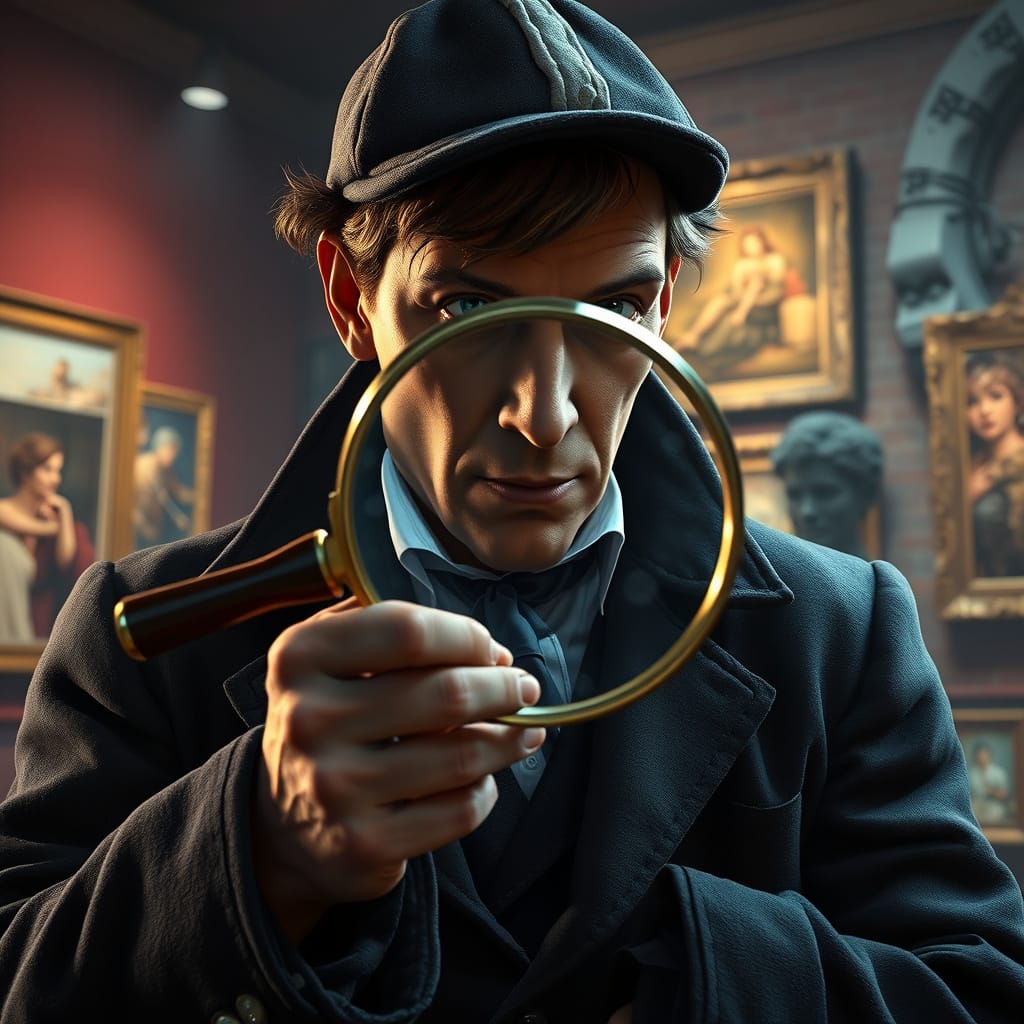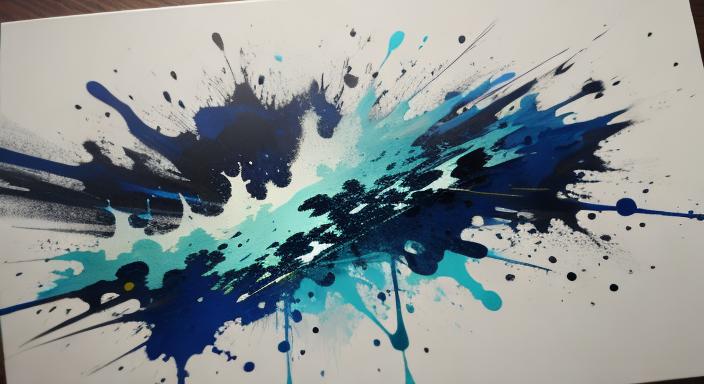Imagine walking through a room filled with colors, shapes, and stories – that’s the world of art collecting! But have you ever wondered about the motivations for art collecting? Why do some people develop such a passion for gathering artworks? It’s certainly more than just decorating walls; it’s akin to piecing together a complex puzzle of feelings, ideas, and perhaps even a thrilling adventure. Think of an art collector as a detective, but instead of solving mysteries with traditional clues, they are finding treasures that resonate deeply with their heart and mind, driven by a unique set of motivations.
Just like understanding why kids love certain toys, understanding why grown-ups collect art tells us a lot about what makes us human. It’s a mix of feelings, smart thinking, and even a little bit of adventure. Let’s dive into the colorful world of art collecting and explore what really makes collectors tick.
Key Takeaways: Unlocking the Collector’s Mind
- Art collecting is driven by a mix of motivations: It’s not just about money or decoration.
- Emotions play a huge role: Collectors often feel a deep personal connection to the art they own.
- It’s a form of play and discovery: The thrill of finding and acquiring art is a big part of the fun.
- Expertise and knowledge matter: Understanding art enhances the collecting experience.
- Behavioral psychology explains collecting patterns: Just like in other areas of life, collectors can be influenced by biases.
- Art collecting is for everyone: You don’t need to be rich to start appreciating and collecting art.
- Key Takeaways: Unlocking the Collector's Mind
- Listen or download our Podcast on Motivations for Art Collecting
- The Joy of Discovery: Unearthing Hidden Artistic Gems
- Completing the Set: The Deep Urge for Artistic Wholeness
- Outsmarting the Market: The Collector as a Strategic Player
- Filters
- Art as a Mirror: Reflecting Personal Identity and Values
- The Comfort of Beauty: Seeking Aesthetic Pleasure and Harmony
- Nostalgia and Memory: Art as a Time Capsule of Experiences
- Art as an Asset: Diversification and Potential Financial Gain
- Table of the Top 10 Art Paintings sold at Auction in 2024
- Social Signaling: Displaying Taste, Wealth, and Cultural Capital
- Building a Legacy: Art for Future Generations and Enduring Impact
- Deep Knowledge: Passionate Hobby vs. Informed Artistic Choices
- Curating a Collection: Crafting a Meaningful Artistic Narrative
- Seeking Advice: Navigating the Art World with Experts
- Confirmation Bias: Seeing Art That Fits Our Preconceived Notions
- Loss Aversion: Holding On Tight, Even When It Doesn't Make Sense
- Herding Behavior: Following the Crowd in the Art Market
- The First Purchase: Taking the Plunge and Starting the Collection
- Developing Taste: Refining Preferences and Expanding Horizons
- The Evolution of Motives: How Collecting Goals Change Over Time
- Dispelling Myths: Art Collecting is Not Just For the Ultra-Wealthy Elite
- Starting Small: Prints, Photography, and Emerging Artists as Entry Points
- The Joy of Any Collection: Personal Value Over Monetary Worth
- Educate Yourself: Immerse Yourself in Art History and Styles
- Trust Your Gut: Collect What You Genuinely Love and Connect With
- Start Small and Network: Explore Galleries and Meet Artists
- NFTs and Digital Art: New Forms of Ownership and Creativity
- Online Art Marketplaces: Democratizing Access and Global Reach
- The Enduring Human Need: Art and Connection in the Digital Age
Listen or download our Podcast on Motivations for Art Collecting

The Thrill of the Hunt: Why Collecting Art Feels Like a Game
Imagine going on a treasure hunt! You get clues, search high and low, and when you finally find the treasure, it’s super exciting. For many art collectors, the process of finding and acquiring art is just as thrilling. It’s like a game where you’re always looking for the next amazing piece to add to your collection.
Think about it like this: some people love collecting stamps, others collect coins, and art collectors? They hunt for paintings, sculptures, and incredible creations. It’s not just about having the art; it’s about the fun of the chase!
The Joy of Discovery: Unearthing Hidden Artistic Gems
Have you ever found a really cool rock or a pretty shell at the beach? Remember that feeling of excitement? Art collectors feel that way when they discover a piece of art that not everyone knows about yet. It’s like finding a hidden gem! They might stumble upon a talented artist who is just starting out, or find a beautiful painting tucked away in a small gallery.
This joy of discovery is a powerful motivator. It’s the feeling of being in on a secret, of finding something special before anyone else does. It connects them to the art world in a unique and personal way. This could be anything from a watercolor sketch to a small sculpture – the thrill is in recognizing its hidden potential and beauty. Just like Prominent Painting seeks to uncover the best in painting and artistic expression, collectors are on their own personal journeys of artistic discovery.
Completing the Set: The Deep Urge for Artistic Wholeness
Think about collecting stickers or trading cards. Do you ever feel that urge to get all of them? To complete the whole set? Art collectors can feel that way too. They might focus on collecting works by a particular artist, from a specific art movement, or within a certain style. It’s about building a complete and cohesive collection.
This desire for completeness taps into a deep human urge. It’s about creating order and meaning, building a world within your own collection. For example, a collector fascinated by Impressionism might aim to gather paintings that showcase the full range of this vibrant movement. Or someone drawn to watercolor might seek out examples from different masters of watercolor techniques. This feeling of completion is incredibly satisfying.
Outsmarting the Market: The Collector as a Strategic Player
Imagine you’re playing a game where you can buy and sell things. If you’re good at it, you can make smart choices and win! Some art collectors also enjoy the strategic side of collecting. They research artists, understand art market trends, and try to buy pieces that they believe will become more valuable over time.
This strategic aspect appeals to the intellectual side of collecting. It’s about understanding the art market, predicting future trends, and making informed decisions. It’s not just about liking a pretty picture; it’s about seeing art as an asset and navigating the complexities of the art world. For example, keeping an eye on art market trends in 2025 could inform a collector’s strategic decisions.
Art Movement Price Analysis
Filters
Note: Trends only
NB: Data as of February 2025 – results show trends only as availability of auction prices is restricted
Emotional Connection: Art as a Mirror to Our Souls
Art isn’t just something pretty to look at; it can make us feel things. Think about a song that makes you happy or a movie that makes you cry. Art has that kind of power too. For many collectors, the emotional connection to a piece of art is the most important thing. It’s like the artwork is speaking directly to their soul.
This emotional resonance is what turns a beautiful object into a cherished possession. It’s why collectors are often deeply passionate about their art and form strong bonds with the pieces they own. It becomes more than just decor; it’s a part of their emotional landscape.
Art as a Mirror: Reflecting Personal Identity and Values
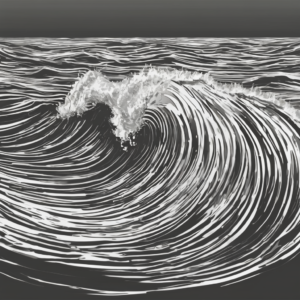
Have you ever picked out clothes or decorated your room to show people who you are? Art can be like that too. The art we choose to live with can be a reflection of our personality, our beliefs, and what we find important in the world.
Collectors often select art that resonates with their personal identity. It might be art that aligns with their cultural background, their political views, or their personal experiences. For example, someone deeply connected to nature might collect seascape paintings. Or, a collector passionate about social justice might be drawn to art that addresses societal issues. The art becomes a visual representation of who they are and what they stand for.
The Comfort of Beauty: Seeking Aesthetic Pleasure and Harmony
Sometimes, we just want to be surrounded by beautiful things. It makes us feel good, peaceful, and inspired. Art collectors often seek out art that brings them aesthetic pleasure – things that are simply beautiful to look at. It’s about creating a harmonious and visually pleasing environment.
This pursuit of beauty is a fundamental human desire. Art can provide a sense of calm, joy, and wonder. Collectors might be drawn to art with particular color palettes, compositions, or subjects that they find aesthetically pleasing. It’s about curating a personal oasis of beauty and visual delight in their homes or spaces.
Nostalgia and Memory: Art as a Time Capsule of Experiences
Have you ever smelled something that suddenly reminded you of a happy memory? Art can work like that too. A piece of art can remind a collector of a specific time in their life, a special place they visited, or a person they love. It becomes a time capsule of memories and emotions.
Art’s ability to evoke nostalgia is powerful. A painting might remind a collector of a trip to Provence and its sun-drenched landscapes. Or a vintage print could bring back memories of their childhood home. Art becomes intertwined with personal narratives, holding precious moments and experiences within its frame.
Investment and Status: The Practical Side of Art Collecting
While emotions are a big part of art collecting, there’s also a practical side. For some collectors, art is also an investment – something that can increase in value over time. And, let’s be honest, owning beautiful and valuable art can also bring a certain level of social status and recognition.
Think of it like having a special kind of treasure. It’s not just pretty, but it could also be worth a lot of money someday. This practical aspect adds another layer of motivation for some art collectors.
Art as an Asset: Diversification and Potential Financial Gain
Just like people invest in houses, stocks, or gold, some see art as a valuable asset. Art can appreciate in value, sometimes significantly, and it can be a way to diversify investments. For these collectors, art is not just a passion but also a smart financial decision.
Investing in art requires knowledge and careful consideration. It’s about understanding the art market, identifying emerging artists, and recognizing pieces with potential for future appreciation. Collectors who view art as an asset often research extensively, follow auction results, and seek advice from art market professionals. This is a far cry from simply buying a painting because it matches the sofa; it’s a strategic approach to building wealth through art. Prominent Painting’s insights into the art world can be invaluable for such collectors.
Table of the Top 10 Art Paintings sold at Auction in 2024
| Rank | Artist | Artwork | Price (USD) | Auction House | Date |
|---|---|---|---|---|---|
| 1 | René Magritte | L’Empire des Lumières (1954) | $121.2 million | Christie’s, New York | November 19, 2024 |
| 2 | Ed Ruscha | Standard Station, Ten-Cent Western Being Torn in Half (1964) | $68.3 million | Christie’s, New York | November 19, 2024 |
| 3 | Claude Monet | Nympheas (1914–17) | $65.5 million | Sotheby’s, New York | November 18, 2024 |
| 4 | Mark Rothko | Untitled (Yellow and Blue) (1954) | $32.5 million | Sotheby’s, Hong Kong | November 11, 2024 |
| 5 | Alberto Giacometti | Femme qui marche II (1932–36) | $26.6 million | Christie’s, New York | November 19, 2024 |
| 6 | Pablo Picasso | La Statuaire (1925) | $24.8 million | Sotheby’s, New York | November 18, 2024 |
| 7 | Jean-Michel Basquiat | Untitled (1982) | $22.95 million | Christie’s, New York | November 21, 2024 |
| 8 | Wassily Kandinsky | Weisses Oval (White Oval) (1921) | $21.6 million | Sotheby’s, New York | November 18, 2024 |
| 9 | David Hockney | Still Life On Glass (1971) | $19 million | Christie’s, New York | November 19, 2024 |
| 10 | René Magritte | L’Empire de Lumières (1956) | $18.8 million | Christie’s, New York | November 19, 2024 |
This table represents the most expensive paintings sold at auction in 2024, with René Magritte’s “L’Empire des Lumières” (1954) topping the list at $121.2 million

Social Signaling: Displaying Taste, Wealth, and Cultural Capital
Let’s be real – owning impressive art can impress people. It can signal that you have good taste, are wealthy, and are part of a sophisticated cultural world. For some collectors, this social signaling aspect is part of the motivation. Art becomes a way to communicate their status and cultural capital to others.
Displaying art is a form of non-verbal communication. The art a collector chooses to exhibit in their home or office can convey messages about their personality, values, and social standing. A collection of Pop Art might signal a playful, modern sensibility, while a collection of Renaissance paintings might suggest a more traditional and scholarly persona. Art becomes a powerful tool for self-expression and social positioning.
Building a Legacy: Art for Future Generations and Enduring Impact
Imagine creating something that lasts long after you’re gone. For some collectors, art is about building a legacy. They want to assemble a collection that will be admired and valued by future generations. It’s about creating something enduring and meaningful that extends beyond their own lifetime.
The idea of legacy is deeply tied to the human desire for immortality and significance. Collectors who are motivated by legacy often think about their collections in the long term. They may consider donating their art to museums or establishing foundations to ensure its preservation and accessibility for future generations. They see themselves as stewards of culture, preserving and passing on artistic treasures. Think of famous collectors like Peggy Guggenheim, whose collection continues to inspire and educate people even today.
The Role of Expertise: Knowing What You Collect Deeply
Collecting art isn’t just about impulse buys. For many serious collectors, expertise and knowledge are key. They delve into art history, learn about different styles and techniques, and develop a deep understanding of the art world. This expertise enhances their collecting experience and adds another layer of enjoyment.
It’s like becoming a super-fan of art! The more you know, the more you appreciate, and the more rewarding the collecting journey becomes. This expertise isn’t just about impressing others; it’s about enriching their own relationship with art.
Deep Knowledge: Passionate Hobby vs. Informed Artistic Choices
There’s a difference between just liking art and truly knowing art. Serious collectors often develop deep knowledge about art history, artists, and different artistic movements. This knowledge isn’t just academic; it fuels their passion and informs their collecting decisions.
For some, collecting starts as a passionate hobby, driven by instinct and emotion. However, as they delve deeper, they often develop a more informed approach. They learn to distinguish between different artistic periods, understand the nuances of painting styles and movements, and appreciate the historical and cultural context of artworks. This expertise allows them to make more discerning and meaningful choices in their collecting journey.
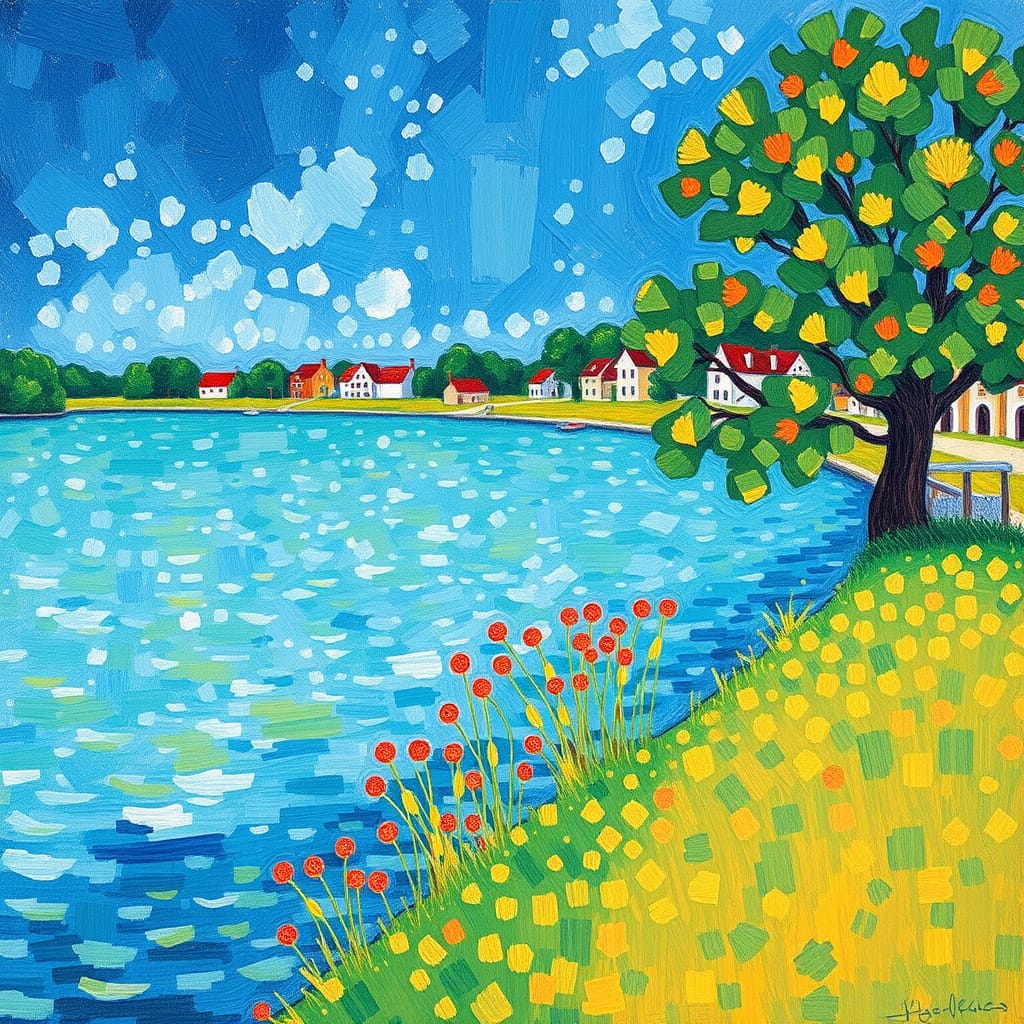
Curating a Collection: Crafting a Meaningful Artistic Narrative
Think about telling a story with pictures. That’s what curating an art collection can be like. Serious collectors often think about their collections as a whole, aiming to create a meaningful narrative or to express a specific vision. It’s about more than just accumulating individual pieces; it’s about crafting a cohesive artistic statement.
Curating a collection is a creative act in itself. Collectors might choose to focus on a particular theme, a specific period, or a certain type of artist. They carefully select pieces that speak to each other, creating dialogues and connections within the collection. This process of curation transforms a group of artworks into a unified and meaningful whole, reflecting the collector’s intellectual and artistic vision. Perhaps a collector might focus on women in art to tell a story of overlooked talent and historical context.
Seeking Advice: Navigating the Art World with Experts
The art world can be complex and overwhelming. Even experienced collectors often seek advice from experts like art dealers, gallery owners, and art consultants. These experts can provide valuable insights, help with appraisals, and guide collectors in making informed decisions.
Seeking expert advice is a smart strategy, especially when dealing with high-value art or navigating unfamiliar areas of the art market. Experts bring specialized knowledge and experience, helping collectors avoid pitfalls and make sound investments. They can provide insights into market trends, artist reputations, and the authenticity and condition of artworks. Building relationships with reputable art galleries and consultants is an essential part of serious art collecting.
Behavioral Psychology in Art Collecting: Understanding Common Biases
Just like in investing money or making other important decisions, our brains can sometimes play tricks on us when we collect art. Behavioral psychology helps us understand these common biases that can influence art collectors, sometimes without them even realizing it.
Being aware of these biases can help collectors make more rational and informed choices, and avoid common pitfalls in the art market. It’s all about understanding our own minds and how they can impact our collecting behavior.
Confirmation Bias: Seeing Art That Fits Our Preconceived Notions
Have you ever heard what you wanted to hear, even if it wasn’t exactly true? That’s kind of like confirmation bias. In art collecting, it means collectors might be more likely to value and seek out art that confirms their existing beliefs about art, value, or taste, and overlook art that challenges those beliefs.
For example, a collector who believes that only traditional oil paintings are “real art” might dismiss contemporary digital art, even if it’s innovative and meaningful. Confirmation bias can lead collectors to narrow their focus and miss out on potentially exciting and valuable art outside their comfort zone. It’s important for collectors to be aware of this bias and actively seek diverse perspectives and challenge their own assumptions.
Loss Aversion: Holding On Tight, Even When It Doesn’t Make Sense
Imagine you have a toy that you don’t play with anymore, but you still don’t want to give it away. That’s a bit like loss aversion. In art collecting, it means collectors can become overly attached to their artworks and reluctant to sell them, even if it would be financially beneficial. The pain of losing a piece, even for profit, can feel stronger than the pleasure of gaining something else.
Loss aversion can lead to collectors holding onto artworks that are no longer aligned with their collecting goals or that could be traded for more valuable or relevant pieces. It’s driven by the emotional attachment to possessions and the fear of regret. Objectively evaluating the collection and being willing to part with pieces, even if it feels difficult, is crucial for building a dynamic and valuable collection.
Herding Behavior: Following the Crowd in the Art Market
Have you ever done something just because everyone else was doing it? That’s herding behavior. In the art world, it means collectors might be influenced by trends and popular choices, even if those choices don’t truly align with their personal taste or investment strategy. They might buy what’s “hot” or what everyone else is buying, fearing they will miss out.
Herding behavior can create artificial bubbles in the art market, driving up prices for certain artists or styles based on hype rather than intrinsic value. Collectors who simply follow the herd risk overpaying for trendy art and missing out on undervalued or emerging artists. It’s important to cultivate independent taste and make informed decisions based on personal research and conviction, rather than blindly following market trends.
| Bias | Description | Impact on Art Collecting |
|---|---|---|
| Confirmation | Favoring information that confirms existing beliefs. | Collectors seek art that validates their current tastes and values, missing diverse perspectives. |
| Loss Aversion | Feeling the pain of loss more strongly than the pleasure of gain. | Reluctance to sell art, even if financially beneficial, hindering portfolio optimization. |
| Herding | Following trends and popular choices, even if they don’t align personally. | Overpaying for trendy art, missing undervalued pieces, and contributing to market bubbles. |
The Collector’s Journey: From Novice to Connoisseur Over Time
No one starts out as an expert art collector! It’s a journey that evolves over time. From the first tentative purchase to becoming a seasoned connoisseur, the path of an art collector is filled with learning, discovery, and changing motivations.
Just like learning to ride a bike or play a musical instrument, art collecting is a skill that you develop and refine over time. Each purchase, each gallery visit, each art book read, contributes to the collector’s growth and understanding.
The First Purchase: Taking the Plunge and Starting the Collection
Remember the first time you tried something new and exciting? That first step can be the hardest, but also the most rewarding. For many art collectors, the first purchase is a significant milestone. It marks the beginning of their collecting journey and sets the stage for future acquisitions.
The first purchase is often driven by emotion and intuition. It might be a piece that simply “speaks” to the collector, regardless of artist reputation or market value. It’s about taking that initial leap of faith and trusting one’s own aesthetic judgment. This first piece becomes the cornerstone of the collection, a tangible symbol of their entry into the art world. Perhaps it’s a print from an emerging artist found at an affordable art supplies store, but it sparks a lifelong passion.
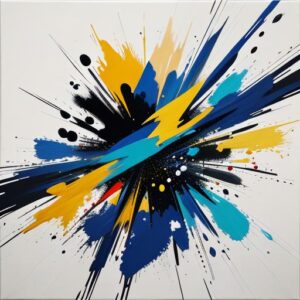
Developing Taste: Refining Preferences and Expanding Horizons
Just like your taste in music or food changes as you grow older, your taste in art also evolves over time. As collectors see more art, learn more about different styles, and reflect on their own preferences, their taste becomes more refined and nuanced.
Developing taste is a continuous process of exploration and learning. Collectors might initially be drawn to certain types of art, but as they immerse themselves in the art world, they may discover new styles, artists, and mediums that resonate with them. They might move from collecting only representational art to appreciating the complexities of abstract art, or from focusing on paintings to exploring sculptures or photography. This evolution of taste is a hallmark of the developing art connoisseur.
The Evolution of Motives: How Collecting Goals Change Over Time
The reasons why people start collecting art might be different from why they continue to collect years later. Initial motivations might be purely aesthetic, but over time, collectors’ goals and motivations can evolve to include investment, legacy building, or a deeper engagement with the art community.
For example, someone might start collecting art simply because they enjoy decorating their home with beautiful things. But as their collection grows and their knowledge deepens, their motivations might shift towards building a significant collection, supporting emerging artists, or leaving a cultural legacy. The journey of an art collector is not static; it’s a dynamic process of evolving tastes, motivations, and collecting goals.
Is Art Collecting For Everyone? Accessibility and Breaking Down Myths
You might think art collecting is only for super-rich people with fancy mansions. But that’s not true! Art collecting can be for anyone who loves art, no matter their budget or background. It’s about passion and appreciation, not just wealth.
It’s about opening up the world of art to everyone. The joy of collecting isn’t limited to the elite; it’s a human experience that anyone can participate in. Let’s dispel some myths and explore how art collecting can be accessible to all.
Dispelling Myths: Art Collecting is Not Just For the Ultra-Wealthy Elite
A common misconception is that art collecting is exclusively for the wealthy. While high-end art can be incredibly expensive, art collecting exists at all price points. From prints and photography to works by emerging artists, there are countless ways to start a collection without breaking the bank.
The art world is vast and diverse. It includes not only multi-million dollar masterpieces but also affordable prints, drawings, photographs, and works by emerging artists. Starting an art collection doesn’t require vast sums of money. It’s about finding art that you love and that fits within your budget. Exploring local galleries, art fairs, and online platforms can reveal a wealth of accessible and exciting art options.
Starting Small: Prints, Photography, and Emerging Artists as Entry Points

Thinking about starting your own art collection? Great! You don’t need to buy a Picasso right away. You can begin with more affordable options like prints, photography, or works by artists who are just starting their careers. These can be fantastic ways to begin your journey and discover what you love.
Prints and photography offer excellent entry points to art collecting. They are often more affordable than original paintings or sculptures, yet they can be just as beautiful and meaningful. Collecting works by emerging artists is another accessible and exciting way to start. You can support up-and-coming talent and potentially acquire valuable pieces as their careers grow. Prominent Painting often highlights emerging artists and accessible forms of painting, making it a great resource for aspiring collectors.
The Joy of Any Collection: Personal Value Over Monetary Worth
Ultimately, the value of an art collection is not just about money. The real value lies in the personal joy, emotional connection, and intellectual stimulation that art brings to the collector’s life. A collection, no matter its monetary worth, is valuable if it enriches the collector’s life and brings them happiness.
The most important aspect of art collecting is personal enjoyment. A collection that is deeply meaningful to the collector, regardless of its market value, is a successful collection. It’s about surrounding yourself with art that you love, that inspires you, and that reflects your unique personality and values. The true reward of art collecting is the personal enrichment and fulfillment it brings, not just the potential for financial gain.
My Personal Journey into the World of Art Appreciation (An Expert Anecdote)
As someone who has spent years immersed in the world of painting and art, I can tell you that the psychology of collecting is something I’ve witnessed firsthand, and even experienced myself. My own journey began not as a collector, but as a student of art history, fascinated by the stories behind the canvases. But something shifted when I encountered a small, unassuming watercolor at a local art fair. It wasn’t by a famous artist, and it wasn’t expensive, but it captured a fleeting moment of light in a way that truly moved me.
It was a simple watercolor landscape, but it sparked something within me. It wasn’t about investment or status; it was pure emotional resonance. That little watercolor became the first piece in what is now a modest but personally cherished collection. It taught me that the true heart of art collecting lies in that personal connection, that “aha!” moment when a piece of art speaks directly to you. It’s a journey of self-discovery as much as it is about acquiring art.
Expert Advice for Aspiring Art Collectors: Starting Your Own Journey
So, you’re thinking about starting your own art collection? That’s fantastic! Here’s some advice from someone who’s been around the art block a few times. Remember, it’s a marathon, not a sprint. Enjoy the process and let your passion guide you.
“Don’t buy art because you think you should like it, buy art because you do like it.” – Clement Greenberg, influential art critic.
Educate Yourself: Immerse Yourself in Art History and Styles
Knowledge is power in the art world. The more you learn about art history, different artistic movements, and various techniques, the more enriched your collecting experience will be. Start reading art books, visiting museums, and taking art history courses (even online ones!).
Education doesn’t have to feel like homework. Make it fun! Explore different art periods like the Renaissance or Impressionism. Learn about famous artists and their unique painting styles. Understanding the context and history behind art will deepen your appreciation and inform your collecting choices.
Trust Your Gut: Collect What You Genuinely Love and Connect With
The most important rule of art collecting? Buy what you love! Don’t worry about trends or what others think is valuable. If a piece of art moves you, excites you, or simply makes you happy, that’s a great reason to collect it. Your personal connection to the art is what truly matters.
Forget about trying to impress others or follow market hype. Focus on developing your own taste and trusting your intuition. Visit galleries, explore online art platforms, and spend time looking at art. Pay attention to how different pieces make you feel. Collect art that resonates with you on an emotional and intellectual level. Your collection should be a reflection of your personal passions and values.
Start Small and Network: Explore Galleries and Meet Artists
You don’t need a huge budget to start. Begin by exploring local galleries, visiting art fairs, and attending artist talks. Engage with the art community, meet artists, and talk to gallery owners. Networking can open doors to new discoveries and opportunities in the art world.
Start small, perhaps with prints or works by emerging artists. Use art discovery apps to explore online galleries and artists. Attend local art events and gallery openings. Don’t be afraid to ask questions and engage in conversations with artists and art professionals. Building relationships within the art community can enhance your knowledge, expand your network, and lead to exciting collecting opportunities.
The Future of Art Collecting: Digital Art, NFTs, and Evolving Landscapes
The world is changing, and so is the art world! Digital art, NFTs (Non-Fungible Tokens), and online marketplaces are transforming how art is created, bought, and collected. This digital revolution is opening up new possibilities and challenges for art collectors.
The future of art collecting is exciting and dynamic. Technology is democratizing access, creating new forms of art, and reshaping the traditional art market. Collectors today need to be open to these changes and explore the opportunities they present.
NFTs and Digital Art: New Forms of Ownership and Creativity

Have you heard of NFTs? They’re like special digital certificates that prove you own a unique piece of digital art. NFTs are changing the way people collect digital creations, from images and videos to virtual worlds. This is a whole new frontier in art collecting!
NFTs are revolutionizing the art market by enabling ownership and trading of digital art in a secure and verifiable way. They are empowering digital artists and creating new avenues for collectors to acquire and support their work. The rise of NFTs is blurring the lines between the physical and digital art worlds and opening up exciting possibilities for collectors interested in AI art and other forms of digital creativity.
Online Art Marketplaces: Democratizing Access and Global Reach
In the past, you might have had to travel to fancy galleries to buy art. Now, online art marketplaces are making art accessible to everyone, everywhere. You can browse and buy art from artists and galleries all over the world, right from your computer or phone!
Online platforms are democratizing the art market, making it more transparent and accessible to a wider audience. Collectors can discover artists and artworks from around the globe, compare prices, and make purchases from the comfort of their homes. This increased accessibility is expanding the reach of art and creating new opportunities for both collectors and artists.
The Enduring Human Need: Art and Connection in the Digital Age
Even with all these digital changes, the fundamental human need for art and emotional connection remains the same. Whether it’s a physical painting or a digital artwork, people will always be drawn to art that moves them, inspires them, and reflects their experiences. The psychology of art collecting, at its core, is about this enduring human need for beauty, meaning, and connection.
Despite the technological advancements, the core motivations behind art collecting remain deeply human. The desire for beauty, emotional connection, self-expression, and legacy are timeless. While the forms and channels for art collection may evolve, the fundamental psychological drivers will continue to shape the art world for generations to come. The growing size of the art market reflects this enduring human interest in art.
Conclusion: The Rich and Colorful Tapestry of Art Collecting Motivation
As we’ve explored, the psychology of art collecting is far more complex than simply wanting pretty pictures on the wall. It’s a rich tapestry woven with threads of emotion, strategy, intellectual curiosity, and personal identity. It’s about the thrill of the hunt, the comfort of beauty, the pursuit of knowledge, and the desire for connection.
Whether you’re a seasoned collector or just starting to appreciate art, understanding these motivations can deepen your own engagement with the art world. It reminds us that art is not just about objects; it’s about human experience, emotion, and the enduring power of creativity. So, next time you see someone admiring a piece of art, remember – there’s a whole fascinating world of psychology behind that gaze.
Frequently Asked Questions (FAQs) About Art Collecting Psychology
What are the main motivations behind art collecting?
People collect art for a variety of reasons, including emotional connection, aesthetic pleasure, investment potential, social status, intellectual stimulation, and the thrill of the hunt and discovery. Often, it’s a combination of these factors.
Is art collecting only for wealthy people?
No! Art collecting is accessible at all price points. You can start with affordable options like prints, photography, or works by emerging artists. The most important thing is to collect art that you love, regardless of its price tag.
How can I start art collecting if I’m a beginner?
Start by educating yourself about art history and different styles. Visit museums and galleries, explore online art platforms, and talk to artists and gallery owners. Begin with affordable pieces that you genuinely connect with, and let your collection grow organically over time.
What role does behavioral psychology play in art collecting?
Behavioral psychology helps us understand the biases that can influence collectors’ decisions, such as confirmation bias, loss aversion, and herding behavior. Being aware of these biases can help collectors make more informed and rational choices.
Is art collecting a good financial investment?
Art can be a good investment, but it’s not guaranteed. The art market can be complex and unpredictable. If you’re collecting primarily for investment purposes, it’s essential to do your research, seek expert advice, and understand the risks involved. However, for many collectors, the personal enjoyment and emotional value of art outweigh the financial aspect.

